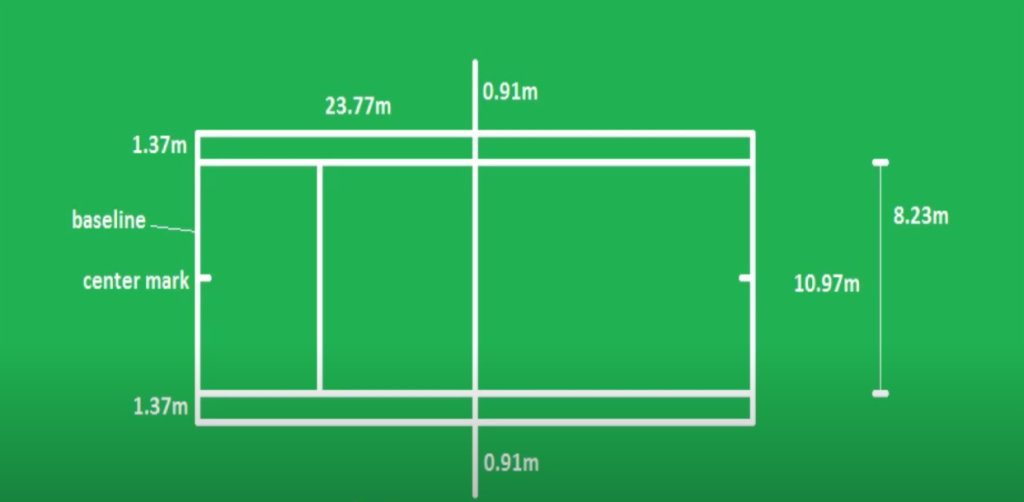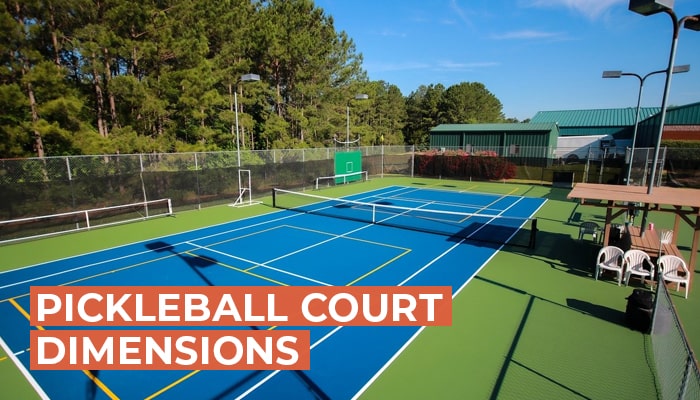Pickleball is a two to four-player oar (ball/racquet) sport that is rapidly spreading all around the world. There are several aspects of the pickleball game. Let us look at these aspects.
We’ll talk about what size the court ought to be, the various spaces of the court that must be stamped, and the kinds of things you should use for your pickleball court.
You’ll learn all that you want to know to make your pickleball court. The guidelines discussed are what the United States of America Pickleball Association has suggested for this size of the court.
Court Dimensions:
To plan a pickleball court, you’ll have to guarantee appropriate pickleball court estimations. If the dimensions of the court are not taken out correctly then the chances of playing on the court professional are next to nothing. In case you are not playing professionally and just practicing, you are practicing on the wrong dimensions which would damage rather than improve your game.
Guidelines on How to Measure Out Pickleball Court Dimensions:
In Pickleball points are given based on the non-volley zone line and outside of the playing area.
There are three boundary lines of the non-volley zone around the net. The non-volley zone limit is one equal line seven feet from the net. The two sidelines are opposite to the net yet inside the NVZ.
Lines:
When you have your court allotted and set up, you need to draw out the pickleball lines. There are various lines for explicit spaces of the court. Exact and precise markings are important to have a guideline court.
The court guidelines are:
Baseline:
In Pickleball the players are not allowed to cross the baseline when they are serving and at the backside of the court, the baseline runs corresponding to the net.
Centerline:
The centerline stretches out from the kitchen to the benchmark and partitions the court into equivalent parts.
Kitchen:
The non-volley area of the court is called the kitchen and it is seven feet long.
Non-Volley Zone (Kitchen):
The area of the Non-Volley Zone is 7 x 20 feet. It is rectangular in shape and obviously on both sides of the net. The area of the non-volley zone (or kitchen) is deliberately kept large to keep the players from hitting a volley from close to the net. If the players were allowed to hit volleys (hit the ball in the air) so close to the net it would increase the chances of injuries resulting from volleys.

Administration Courts:
The help courts are the regions on one or the other side of the centerline, limited by the non-volley line, the pattern/baseline, and the sideline.
Sideline:
The sideline runs opposite the net on one or the other side of the court.
Playing Court:
The USAPA has advised that the shape of the pickleball court must be square and the size should be 20 feet wide and 44 feet long (this is similar to the court of badminton). However keep in mind this is the size for just the court area, not the total playing area. The total playing area would of course be larger. The official size for the playing area is 30 feet wide and 60 feet long.
The following is the law stated in the rulebook of USAPA:
“2.A.1. The court shall be a rectangle 20 feet (6.10 m) wide and 44 feet (13.41 m) long for both singles and doubles matches.”
“2.A.3. A minimum playing surface area measuring 30 feet (9.14 m) wide and 60 feet (18.29 m) long is recommended. A 10-foot (3.05-m) surrounding margin with a larger size of 40 feet (12.19 m) by 64 feet (19.51 m) is preferred.”
This size court takes into consideration single groups (two players playing against one another) or teams of two (four individuals in total – two for each side).
Pickleball might have a similar size court as badminton, however, the net necessities are unique. The need of the Pickleball game is that the net has to be thirty-six inches high from each end and thirty-four inches high from the center.
External Zones:
In addition to the court size for ongoing games, it is a suggestion that you give sufficient space to the outside of the allotted boundaries region.
The size of the pickleball court area must be twenty-four feet wide and forty-four feet in length consisting of side boundaries.
Pickleball Court versus Tennis Court:
The standard tennis court size is 36′ x 78′. The suggested all-out play region is 60′ x 120′. The number of pickleball courts can fit: Two pickleball courts can fit easily whereas 3 courts can fit if crammed together. However, cramming the courts is highly discouraged.
Pickleball Court versus Volleyball Court:
The standard ball court surface size is 50′ x 84′ (differs). The suggested all-out play region is 62′ x 96′ (shifts)
The number of pickleball courts fits: One pickleball court can fit easily whereas 2 courts can fit if crammed together. However, cramming of the courts as mentioned earlier is highly discouraged.
COURT DIVIDER NETS:
Court dividers are essential when you have multiple courts adjacent to each other. The primary objective of the pickleball court divider is to separate two individual courts. This results in faster games since the ball remains inside the playing area and does not cross into someone else’s playing area. It helps save time and obviously makes the matches more fun and entertaining.
Conclusion:
Last but not least pickleball court dividers reduce the chances of injuries to players playing on the other court since their attention is on their own game and any wild shot from your court may result in an injury to those unsuspecting players on the other court.

